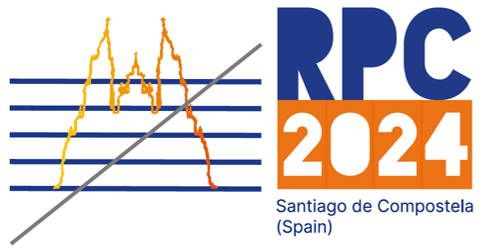Speaker
Description
The Resistive Cylinrical Chamber (RCC) is a new gaseous detector designed
to overcome some limitations of Resistive Plate Chambers (RPC), broadening
their application range and performance. The RCC consists of two concentric
cylinders made of resistive material which define a gas gap whose thickness is
almost negligible with respect to the cylinder radii. The cylinder surfaces not
facing the gas volume are coated with high resistivity graphite layers, which distribute
the High Voltage on the whole electrode. The signals can be read out by
AC coupled pick-up strip or pads which can be positioned both in the internal
cavity of the smaller cylinder and/or on the external surface of the larger cylinder.
This kind of structure introduces an intrinsic two-gap configuration with
independent pick-up electrodes usable to implement particles tracking and improve
efficiency and time resolution. Furthermore, the cylinder structure allows
to pressurize the gas inside the detector up to the elastic deformation strength
of the electrodes material without mechanical efforts. The gas pressurization
increases the target density with a consequent intrinsic efficiency improvement,
also for very thin gas-gaps. Despite of the gas gap thickness, the detector could
be always designed to produce a not uniform electric field whose gradient depends
on the ratio between the gas gap thickness and the cylinder radius. In
this configuration the internal electric field accelerates or dumps the avalanche
discharge growth according to the electrons drift direction fixed by the high
voltage polarity, extending the operability respectively to very high saturated
charge distributions or to low quenched eco-friendly gas mixtures for high rate
capability. With this features the RCC is a detector with very high time resolution
(order of 100 ps), high efficiency (about 90% for 0.3 mm gas gap filled with
95% R134a based gas mixtures), low material budget and flexible to various applications.
In this presentation we will discuss the characterization of an RCC
detector with 0.3 mm gas gap, operated with standard gas mixture (95% TFE -
4.7% iC4H10 - 0.3% SF6 ), performed with high energy muon beam. A reference
scintillator was inserted in the cylinder cavity to optimize the acceptance of the
trigger system and to highlight the potential for integrating the RCC with other
detection devices. Preliminary test of operation with pressurized CO2 have been
also performed highlighting some weak points of the current configuration.

